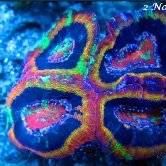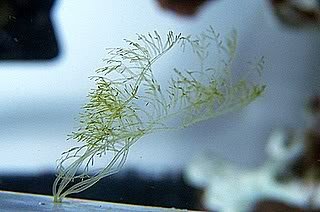-
Posts
910 -
Joined
-
Last visited
Content Type
Profiles
Forums
Gallery
Events
Store
Posts posted by ReefdUp
-
-
I can't speak to the behavior itself, sorry.
However, whenever I have an aggressive fish, I put a mirror alongside the tank wall. I've had fish-after-fish take out aggression there instead of on other fish, especially when paired for low light for a day or two plus an extra feeding. That doesn't work for everyone, but it may help.
-
You may want to attend our meeting coming up, since it's on sumps!
https://wamas.org/forums/topic/101707-spring-2023-meeting-may-6-from-100-pm-until-500-pm/
-
Just now, WarChief said:
I mean I plan to put media in it, my heater in it. And use it more for filtration
Sent from my iPhone using TapatalkOk. If you already have a canister filter, I don't know that I would use it for more media filtration. I would prefer macroalgae, personally.
-
51 minutes ago, WarChief said:
I want to use it more as a sump
What do you mean by this? Sumps typically function by holding additional water, refugium, and equipment. A sump is just defined as a low-lying place (i.e., a tank under a tank).
-
Sure... lots of people have done similar things, especially when starting out. There are just trade-offs...
Some people want to minimize equipment in the tank. Some want to avoid as many chances of leaks/ flooding as possible. Some like to see the refugium parts in their main display - so much so that they intentionally grow macroalgae alongside their corals for a more natural reefscape (although small floating bits can interfere with an in-tank skimmer).
With an in-tank skimmer, you have a higher risk of microbubbles. But I do this on my QT tank and never really notice it.
The main downside of an in-tank refugium is the inability to run a reverse photoperiod (running lights for algae growth) to help stabilize pH.
It's all about what you need to be successful, and there's no right way.
-
-
1 hour ago, AlanM said:
I thought the microalgal chloroplast thing was a different product?
I agree the two of them together there are confusing and don't seem related.
I think so too, but it's on the same product page. Just seems like something random that marketing added in. 🤔
-
Interesting, to say the least. I mean, Bacillus thuringiensis kills larval mosquitoes (and related insects), so I'd be very curious about something that could kill both freshwater and marine ich (different parasites)... and what else in our tanks??
Their website is a bit confusing as it discusses a microalgal extract as the active ingredient... then talks about how they're using something to deliver a vaccine. Those two things are not congruent in my mind. There's not a lot of info in general, which would make me very leary of any sales pitches (ahem - Vibrant, anyone?)
Their website touts an incredible slate of talent, on the R&D, development side, manufacturing/production, etc., all supported by a strong board ... so either they truly have something their investors believe in... or... well... I don't want to be negative. I'm just surprised to see that level of talent going toward a fish parasite. Yes, the food industry needs something like this (high cost), but this sort of staff comes with a high cost too. I'd be interested in understanding the break-even point.
I'll be keeping an eye on this one. But, I'm not eager to invest without more info. 😁
-
2 hours ago, davjbeas said:
I was wondering if there are still t-shirts available
Thanks
Absolutely! Size S to 4XL in dark and light blue. $10 each in person at WAMAS meetings.
-
Thank you for sharing!
-
When I had a Lyngbia outbreak, any disruption to my tank at all caused corals and fish to die within about five minutes. Before I realized what was going on, I kept trying to clean my tank (thinking it was GHA). My arms always felt like they were on fire while cleaning and afterward.
When I had a monstrous population of aiptasia, it seemed like the water column was always full of nematocysts. My arms always came out looking like I had poison ivy rashes all over.
There for a while, I had a general sensitivity to saltwater or at least the salt mix I was using. Clean saltwater even made me break out in a rash, so I imagine I had some sort of overall skin sensitivity issue. It went away (although it lasted about two years and nearly made me quit reefkeeping it got so bad).
Then, yes, there are all the general day-to-day stings, but I usually can attribute them to a certain incident (brushing up against a particular coral.)
There's a ridiculous amount of bacteria, parasites, and other nasties that could cause an issue as well, as mentioned, but those are fairly uncommon (especially if you have uncompromised skin).
But on the less scary side, it's winter, and we're all dealing with dry skin. It could be just as simple as needing to let raw skin heal with moisturizers so that the salt doesn't irritate the condition further. (Although actual itchy bumps isn't really consistent with this one.)
-
Looks like a specific species of nassarius snail eggs. Sometimes they're in beautiful fan patterns, but other species make these little packets.
I assume you do have nassarius snails? Thoughts?
-
@davjbeas I hope you're not considering fluconazole yet. You've got quite a clean tank that really appears to be coming along. I doubt it would take much to knock out the remaining algae. In 15 years of reefkeeping, I've only used it twice. Good husbandry handles the rest.
-
Fluconazole knocked out my bubble algae back in the day. It rocks for stubborn algae, but I don't think you need to be there quite yet.
-
GHA is definitely the most likely. Given how little there is, crabs would potentially starve quickly.
Chances are, there was just a bit of detritus that settled in those places and fueled a bit of algal growth. This coudl be resolved by blowing out the rocks more. Recommend also checking your nutrient parameters.
And, if you're worried about that much algae, definitely don't come see my tank. 🤣
-
-
The Breeding forum would work great. If I get a chance while updating my site, I'll try to copy the breeding info over too.
-
Whatcha wanna know? I kept them for about... 5-8 years or so.
I wrote an article on my site, but the link appears to be down (or I forgot to publish it.) I'll try to put it back up soon.
Here's a SUPER old post on another forum (Utah club) that I wrote.
https://www.utahreefs.com/forum/breeding-journal-species-columbellid-cf-euplica_topic54118.html
-
Welcome, both to the club and the hobby! Hopefully we'll meet you soon at a meeting.
-
What are your Ca and Mg during the fluctuations? They're interrelated.
-
Have you watched any of the YouTube servicing videos?
-
Without a photo, I'm not sure how to help. If there are just rusted screws, have you tried PB Blaster?
-
Thanks to all the sponsors, vendors, our speaker, all the volunteers, and all of our members! This was a fantastic meeting!
If you have any feedback or would like to volunteer, please reach out to one of your friendly club officers.
For those of you who joined or renewed in-person at the meeting, your account should now reflect the change. If it does not, please let me know!
-
Just think of it like the rock sitting in the quarries where the companies typically get dry rock. It all gets rained on. Just make sure there aren't critters, as mentioned. Worst case, rinse it off with some RO/DI. I wouldn't do anything more than that.






Participant Survey
in Club News
WAMAS Participants (not current members), we need your help!
You should see a survey in your email inbox soon with a link to a Google Form survey (it's not spam!) It's short; it should only take about five minutes (if that). We would love to hear your feedback on why you're not a member! (Or, if you're ready to join or need to renew, go here: https://wamas.org/forums/join.php/)
If you have any questions or problems, please let me know. Thanks for your help!
- Nikki
P.S. We are not requiring sign-in or collecting information to identify you (unless you explicitly provide that information in the form). Please only complete the survey once per participating hobbyist.